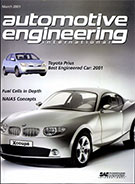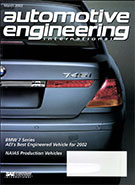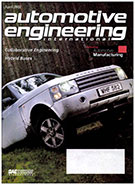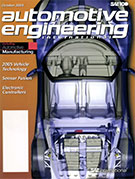Magazine

Automotive Design: Oct/Nov/Dec 2015
2015-11-27
Electronics arms race hots up The automotive supply chain landscape is undergoing huge transformation. Dr. Elmar Dagenhart, chairman of the executive board, Continental AG, explains how his company plans to be right at the forefront Sizing up the down-sizing challenge With the impact of VW's 'Dieselgate' still being felt widely, the Aachen automobile and engine technology Colloquium was particularly pertinent this year. Ian Adcock reports on the most significant technologies and presentations. Double coupe coup! Automotive Design'sIan Adcock reflects on some of the concept cars from 2015 that caught his eye Fuelling a sustainable future What is the best route for the UK to achieve its targeted 80% reduction in greenhouse gas emissions?



















